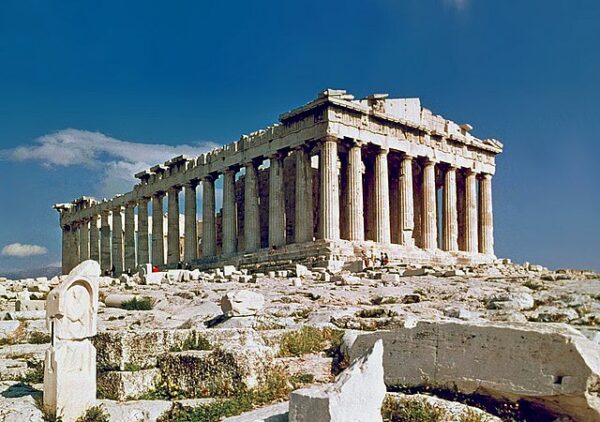On September 26, 1687, the Parthenon, a symbol of ancient Greek civilization and architectural brilliance, suffered catastrophic damage during the Siege of the Acropolis in Athens. At the time, Athens was under Ottoman rule, and the Parthenon, originally a temple dedicated to the goddess Athena, had been repurposed as a gunpowder depot by the Ottoman garrison. This fateful decision would lead to its partial destruction when Venetian forces, under the command of Francesco Morosini, laid siege to the Acropolis as part of the broader conflict between the Venetian Republic and the Ottoman Empire during the Morean War.
The Parthenon, completed in 438 BC during the height of Athenian power, was an enduring symbol of the city’s wealth and cultural achievements. However, following centuries of various rulers, the building had taken on multiple roles. By the 17th century, when the Ottomans controlled Athens, the structure was converted into a mosque, and its vast interior provided a convenient space for storing munitions. The strategic location of the Acropolis, perched high above Athens, made it an important defensive position, and the Ottomans fortified the site, believing its ancient grandeur would deter enemy forces from targeting it directly.
However, in 1687, Venice, under Doge Morosini’s leadership, sought to capture Athens as part of its campaign to reclaim territories from the Ottoman Empire. The Venetians laid siege to the Acropolis, bombarding the fortified hilltop in an attempt to break the Ottoman resistance. Despite the Parthenon’s iconic status, the Venetians did not hesitate to target the site when they learned it housed Ottoman munitions.
On the night of September 26, a Venetian mortar, fired from Philopappos Hill, struck the Parthenon directly. The building was housing a significant amount of gunpowder, and the mortar’s impact set off a massive explosion that tore through the ancient structure. The roof collapsed, and much of the building’s iconic sculptural decoration was damaged or obliterated in the blast. The explosion not only caused significant structural damage but also marked a tragic turning point in the preservation of one of the world’s greatest architectural masterpieces.
Eyewitnesses reported that the explosion sent debris flying across the Acropolis and the surrounding city. The once pristine Parthenon, celebrated for its harmonious proportions and artistic grandeur, was left in ruins. The west façade, in particular, was heavily damaged, and many of the surviving sculptures from the frieze and metopes were disfigured beyond recognition. The massive columns that had stood for over two millennia were either shattered or left teetering on the brink of collapse.
The Venetians ultimately succeeded in capturing the Acropolis, but the destruction of the Parthenon was seen as a tragedy, even by the victors. Morosini himself, despite ordering the bombardment, later expressed regret over the incident. He attempted to remove some of the surviving sculptures as war trophies, but this effort failed when the artifacts were accidentally dropped and further damaged during their removal.
The destruction of the Parthenon during the siege marked the beginning of a long period of decay for the ancient monument. Following the war, Athens remained under Ottoman control until the early 19th century, during which time further damage was inflicted on the site due to looting, neglect, and exposure to the elements. In the early 1800s, the British diplomat Lord Elgin famously removed many of the surviving sculptures, now known as the Elgin Marbles, which were later transferred to the British Museum in London, sparking a long-standing debate over their rightful ownership.
Today, the Parthenon stands as both a ruin and a symbol of resilience. Its partial destruction in 1687 serves as a reminder of the ravages of war and the fragility of cultural heritage, yet its enduring presence continues to inspire efforts for preservation and restoration. The site remains one of the most visited and revered landmarks in the world, attracting millions of visitors who come to admire its ancient grandeur and reflect on its tumultuous history.






